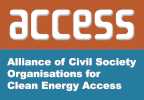Difference between revisions of "Semantic Sandbox"
***** (***** | *****) |
***** (***** | *****) m |
||
| (44 intermediate revisions by the same user not shown) | |||
| Line 1: | Line 1: | ||
| − | + | <div class="header-banner header-banner-country-portal"> | |
| + | <div class="grid grid-collapse stretch-items vertical-middle"> | ||
| + | <div class="width-1-3 header-banner-image"> | ||
| + | <center>[[File:Header_Portal_Mozambique.svg|800px|link=]]</center> | ||
| + | </div> | ||
| + | <div class="width-1-3 header-text-large"> | ||
| + | <div class=""> | ||
| + | = '''Mozambique''' = | ||
| + | = Off grid Knowledge Hub = | ||
| + | </div> | ||
| + | </div> | ||
| + | <div class="width-1-3"> | ||
| + | <svgmap width="100%" color="#79d248" mark="mz" mark-color="#ffc714" flag="true" flag-size=""></svgmap> | ||
| + | </div> | ||
| + | </div> | ||
| + | </div> | ||
| + | |||
| + | <div class="grid"> | ||
| + | <div class="width-3-4"> | ||
| + | == Country Information - Mozambique == | ||
| + | The '''Republic of Mozambique''' is located on the south-eastern coast of Africa and has a surface area of 801,590 square kilometres. It is bordered by South Africa, Swaziland, Zimbabwe, Zambia, Malawi, Tanzania, and separated by the Indian Ocean from Madagascar. The country is divided into ten provinces, and a provincial capital city. It is one of the poorest countries in the world, and the 7th poorest in Africa with a GDP per capita of USD 1281 (2019), a total GDP of USD 14.96 billion (2019), and an annual GDP growth of 3.11% (2018). [[Mozambique- Country Information|Read more...]] | ||
| + | |||
| + | <div class="grid stretch-items"> | ||
| + | <div class="width-1-3 box box-green">'''Background''' | ||
| + | * [[Mozambique- Country Information|Country Profile]] | ||
| + | * [[Mozambique Electricity Situation|Electricity Situation]] | ||
| + | *[[Mozambique Renewable Energy Potential|Renewable Energy (RE) Potential]] | ||
| + | * Energy Access Situation | ||
| + | </div> | ||
| + | |||
| + | <div class="width-1-3 box box-green">'''Institutional Set-up''' | ||
| + | * [[Institutional Framework in Mozambique|Institutional Framework]] | ||
| + | * [[Policy Framework and Energy Access Strategies in Mozambique|Policy Framework & Energy Access Strategies]] | ||
| + | * Energy Access Programmes | ||
| + | * Development Actors | ||
| + | </div> | ||
| + | |||
| + | <div class="width-1-3 box box-green">'''Cross-Cutting Issues''' | ||
| + | * [[Doing Business in Mozambique]] | ||
| + | * Humanitarian Energy-Nexus | ||
| + | * Impact of COVID-19 | ||
| + | </div> | ||
| + | </div> | ||
| + | |||
| − | |||
| − | Solar | + | == Information on RE Technologies for Mozambique == |
| + | <div class="grid grid-collapse portals-wrapper"> | ||
| + | <div class="width-1-1"> | ||
| + | <div class="portals cross-cutting-issues"> | ||
| + | <div class="portal">[[file:icon-solar.svg|150px|link=Portal:Solar|]]<br />[[Mozambique Solar Hub|Solar Home Systems]]</div> | ||
| + | <div class="portal">[[file:icon-cooking.svg|150px|link=Portal:Cooking|]]<br />[[Mozambique Cooking Energy Hub|Improved Cookstoves]]</div> | ||
| + | <div class="portal">[[file:icon-mini-grid.svg|100px|link=Portal:Mini-grid|]]<br />[[Mozambique Mini-grid Hub|Mini/Nano grid]]</div> | ||
| + | <div class="portal">[[file:icon-productive-use.svg|100px|link=Portal:Productive Use|]]<br />Productive Uses of Energy</div> | ||
| + | </div> | ||
| + | </div> | ||
| + | </div> | ||
| − | |||
| − | |||
| − | |||
| − | |||
| − | = < | + | <div class="specials"> |
| + | == Highlights == | ||
| + | <div class="grid stretch-items"> | ||
| + | <div class="width-1-2 width-m-1-2 card">[[file:Webinar icon3.svg|50px]] [https://register.gotowebinar.com/register/1648663127925031180 State of Play: Solar home system (SHS) Market in Mozambiques]</div> | ||
| + | <div class="width-1-2 width-m-1-2 card">[[file:Sample-2.jpg]] [[Portal:Mozambique|Help Manual on how to contribute to the hub]]</div> | ||
| + | </div> | ||
| + | </div> | ||
| − | |||
| − | |||
| − | + | == Mozambique Off-grid Practitioners Group == | |
| + | <div class="grid grid-collapse"> | ||
| + | <div class="width-1-2">{{Mozambique Group}}</div> | ||
| + | <div class="width-1-2">[[File:Ask_a_question.svg|link=|alt=|center|150x150px]]<div class="button-link" style="display: inline-block">[[Group talk:Mozambique Off-grid Practitioners Group|Ask a question]]</div>[[File:Moz_Group.svg|link=|alt=|center|150x150px]]<br/> | ||
| + | <div class="button-link" style="display: inline-block">[[Group:Mozambique Off-grid Practitioners Group|Join the Mozambique Off-grid Practitioners Group]]</div> | ||
| + | </div> | ||
| + | </div> | ||
| − | |||
| − | + | == Latest Articles on Mozambique == | |
| − | <div class=" | + | <div class="grid stretch-items"> |
| + | <div class="width-1-3 box">[[Mozambique_Energy_Situation|Lorem ipsum dolor sit amet, consetetur sadipscing elitr, sed diam nonumy eirmod tempor ]]</div> | ||
| − | + | <div class="width-1-3 box">[[Mozambique_Energy_Situation|Lorem ipsum dolor sit amet, consetetur sadipscing elitr]]</div> | |
| − | |||
| − | < | + | </div> |
| − | |||
| − | < | + | == Funding == |
| + | <div class="grid"> | ||
| + | <div class="width-1-2 box" style="background: none; ">[[file:logo-giz.png|280px|link=https://giz.de/en]] </div> | ||
| + | <div class="width-1-2 box" style="background: none; ">[[File:EnDev-Logo NEW.PNG|240px|link=https://endev.info]]</div> | ||
| + | |||
| + | This portal is funded and developed in collaboration with the GIZ programmes Green People’s Energy for Africa and Energising Development Mozambique to enhance knowledge exchange and sharing among the Mozambican energy practitioners. | ||
| + | </div> | ||
| + | |||
| + | |||
| + | </div><!-- End .width-3-4 --> | ||
| + | |||
| + | <div class="width-1-4"> | ||
| + | <div class="hidden-element"> | ||
| + | == Offers == <!-- Keep this for screenreaders --> | ||
| + | </div> | ||
| + | <div class="box offers">{{MozBoxnews}}</div> | ||
| + | <div class="box offers">{{Boxpublications}}</div> | ||
| + | <div class="box offers">{{Boxcompanies}}</div> | ||
| + | {{Connect_with_us}} | ||
| + | </div> | ||
</div> | </div> | ||
| + | __NOTOC__ __NOEDITSECTION__ __NOTITLE__ | ||
Latest revision as of 18:38, 12 September 2021
Country Information - Mozambique
The Republic of Mozambique is located on the south-eastern coast of Africa and has a surface area of 801,590 square kilometres. It is bordered by South Africa, Swaziland, Zimbabwe, Zambia, Malawi, Tanzania, and separated by the Indian Ocean from Madagascar. The country is divided into ten provinces, and a provincial capital city. It is one of the poorest countries in the world, and the 7th poorest in Africa with a GDP per capita of USD 1281 (2019), a total GDP of USD 14.96 billion (2019), and an annual GDP growth of 3.11% (2018). Read more...
- Country Profile
- Electricity Situation
- Renewable Energy (RE) Potential
- Energy Access Situation
- Institutional Framework
- Policy Framework & Energy Access Strategies
- Energy Access Programmes
- Development Actors
- Doing Business in Mozambique
- Humanitarian Energy-Nexus
- Impact of COVID-19
Information on RE Technologies for Mozambique
Productive Uses of Energy
Highlights
Mozambique Off-grid Practitioners Group
Latest Articles on Mozambique
Funding
This portal is funded and developed in collaboration with the GIZ programmes Green People’s Energy for Africa and Energising Development Mozambique to enhance knowledge exchange and sharing among the Mozambican energy practitioners.
Offers
Sector News
- 29 June 2021Bancos moçambicanos colaboram com programa europeu para aumentar investimentos em energias renováveis
- 30 July 2021Eletricidade de Moçambique tem 21 milhões de euros em dívidas a receber
- 5 Aug 2021Sweden provides €37M for electrification in Inhambane province















